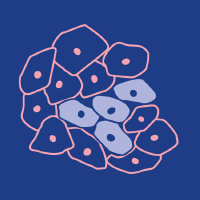Background:
Enterobacter cloacae,
E. hormaechei and related subspecies remain the most clinically relevant among the
Enterobacter cloacae complex (ECC). Carbapenemase-producing ECC strains are increasingly identified in hospital-acquired infections and usually belong to four main multilocus sequence types (MLST STs) named ST114, ST93,
[...] Read more.
Background:
Enterobacter cloacae,
E. hormaechei and related subspecies remain the most clinically relevant among the
Enterobacter cloacae complex (ECC). Carbapenemase-producing ECC strains are increasingly identified in hospital-acquired infections and usually belong to four main multilocus sequence types (MLST STs) named ST114, ST93, ST90 and ST78. Instead, ST182 has been sporadically reported among
E. hormaechei strains, and recently, outbreaks of
blaNDM-producing ST182 clonal strains have emerged. Herein, we aimed to investigate the presence of ST182 and explore its evolution and modes of
blaNDM acquisition. Methods: A phylogenetic analysis of 646 MLST STs identified among 4685
E. hormaechei whole-genome sequencing (WGS) assemblies deposited in public repositories was performed, as well as an in silico comparative and phylogenomic analyses for 55 WGS assemblies of ST182.
blaNDM-harboring contigs were also compared to published plasmid sequences. Results: ST182
E. hormaechei strains were recovered from patients on five continents during 2011–2021. They were divided into three major genomic clusters, comprising a separate clonal complex with six other STs. In 30 out of 55 ST182 WGS assemblies,
blaNDM-harboring structures were identified that were similar to the plasmids predominant in Gram-negative bacteria, harboring resistance genes to multiple antibiotic classes and virulence genes. No associations between the genomic clusters and the country/continent of isolation or the presence and the plasmid types of the
blaNDM-harboring contigs were observed. Conclusions: Our findings show that ST182
E. hormaechei strains have been identified in the past decade worldwide; 54.5% of them carried diverse
blaNDM genetic structures, suggesting recent acquisition of the
blaNDM alleles. Thus,
blaNDM-harboring ST182 is an emerging multidrug-resistant and virulent lineage in ECC strains that requires close monitoring.
Full article
 IJMS
IMPACT
IJMS
IMPACT Sustainability
IMPACT
Sustainability
IMPACT Applied Sciences
IMPACT
Applied Sciences
IMPACT Sensors
IMPACT
Sensors
IMPACT JCM
IMPACT
JCM
IMPACT Materials
IMPACT
Materials
IMPACT Energies
IMPACT
Energies
IMPACT Molecules
IMPACT
Molecules
IMPACT Electronics
IMPACT
Electronics
IMPACT Remote Sensing
IMPACT
Remote Sensing
IMPACT Cancers
IMPACT
Cancers
IMPACT Nutrients
IMPACT
Nutrients
IMPACT Mathematics
IMPACT
Mathematics
IMPACT Foods
IMPACT
Foods
IMPACT Buildings
IMPACT
Buildings
IMPACT Polymers
IMPACT
Polymers
IMPACT Water
IMPACT
Water
IMPACT Animals
IMPACT
Animals
IMPACT Plants
IMPACT
Plants
IMPACT Agronomy
IMPACT
Agronomy
IMPACT Biomedicines
IMPACT
Biomedicines
IMPACT Diagnostics
IMPACT
Diagnostics
IMPACT Processes
IMPACT
Processes
IMPACT Microorganisms
IMPACT
Microorganisms
IMPACT Healthcare
IMPACT
Healthcare
IMPACT Cells
IMPACT
Cells
IMPACT Viruses
IMPACT
Viruses
IMPACT Nanomaterials
IMPACT
Nanomaterials
IMPACT Land
IMPACT
Land
IMPACT Forests
IMPACT
Forests
IMPACT Medicina
IMPACT
Medicina
IMPACT JMSE
IMPACT
JMSE
IMPACT Agriculture
IMPACT
Agriculture
IMPACT IJERPH
IJERPH
 Genes
IMPACT
Genes
IMPACT Symmetry
IMPACT
Symmetry
IMPACT Pharmaceutics
IMPACT
Pharmaceutics
IMPACT Pharmaceuticals
IMPACT
Pharmaceuticals
IMPACT Life
IMPACT
Life
IMPACT Children
IMPACT
Children
IMPACT Micromachines
IMPACT
Micromachines
IMPACT Coatings
IMPACT
Coatings
IMPACT Antioxidants
IMPACT
Antioxidants
IMPACT Metals
IMPACT
Metals
IMPACT Religions
IMPACT
Religions
IMPACT Vaccines
IMPACT
Vaccines
IMPACT Education Sciences
IMPACT
Education Sciences
IMPACT Atmosphere
IMPACT
Atmosphere
IMPACT Horticulturae
IMPACT
Horticulturae
IMPACT Bioengineering
IMPACT
Bioengineering
IMPACT Biomolecules
IMPACT
Biomolecules
IMPACT Brain Sciences
IMPACT
Brain Sciences
IMPACT JPM
IMPACT
JPM
IMPACT Minerals
IMPACT
Minerals
IMPACT Photonics
IMPACT
Photonics
IMPACT Antibiotics
IMPACT
Antibiotics
IMPACT




















